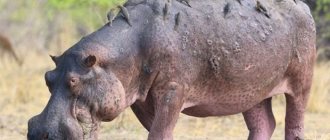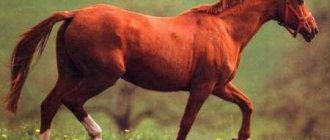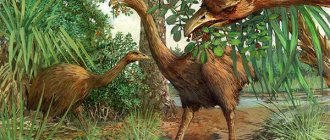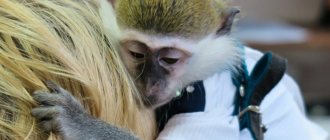| Straight-tusked elephant Temporal range: mid-late Pleistocene ~0.78–0.03 Ma PreꞒ Page N ↓ | |
| Skull and model (from Ambrona) | |
| Scientific classification | |
| Kingdom: | Animalia |
| Type: | Chordata |
| Class: | Mammals |
| Order: | Proboscis |
| Family: | Elephant |
| Genus: | † Palaeoloxodon |
| Variety: | † P. antiquus |
| Binomial name | |
| † Palaeoloxodon antiquus (Falconer and Collie, 1847) | |
| Approximate range of P. antiquus | |
| Synonyms | |
| Elephas antiquus (Falconer & Cautley, 1847). | |
Straight from the tusks of an elephant
(
Palaeoloxodon antiquus
) is an extinct species of elephant that inhabited Europe and western Asia during the Middle and Late Pleistocene (781,000–30,000 years before the present). Recovered individuals reached 4–4.2 meters (13.1–13.8 ft) in height and an estimated 11.3–15 tons (11.1–14.8 long tons; 12.5–16.5 short tons). The straight-tusked elephant probably lived in small herds, thriving during interglacial periods when its range extended to Britain. Individual tusks are common, while partial or complete skeletons are rare, and there is evidence of predation by early humans. It is the ancestral species of most pygmy elephants that inhabited islands in the Mediterranean Sea.
Description[edit]
Complete skeleton in Rome.
Palaeoloxodon antiquus
was quite large, its individuals reached 4 meters in height.
Like other members of Palaeoloxodon, P. antiquus
possesses a well-developed parieto-occipital crest (POC) at the top of the skull to anchor the asterisks, and possibly the rhomboid muscles to support the large head, the largest in proportion and absolute size.
size among proboscis. of P. antiquus
were previously thought to exist in Europe based on POC variation, another similar to
P. namadicus
, but these have been shown to be the result of ontogenetic variation and taphonomic distortions.
[1] One man, approximately 40 years old, was about 3.81 meters (12.5 ft) tall and weighed about 11.3 tons (11.1 long tons; 12.5 short tons), while another man from Montreuil weighed about 15 tons (14.8 long tons; 16.5 short tons) and was about 4.2 meters (13.8 ft) tall. [2] and had long, slightly upward-curved tusks. [3] The legs of P. antiquus
were slightly longer than those of modern elephants. It is believed that this elephant had a tongue 80 cm long, which could be extended a short distance from the mouth to grab leaves and grass. [4] With this tongue and flexible trunk, straight-tusked elephants were able to graze or wander through Pleistocene foliage about 8 meters (26 ft) above the ground. [5]
Life restoration
Giants
Elephants are the most gigantic land animals on Earth. Their average weight reaches five tons, and their body length is 6-7 meters. In 1956, an elephant weighing 11 tons was killed in Angola.
A female elephant carries a baby for 22 months, the newborn weighs 120 kilograms.
The brain of an elephant weighs 5 kilograms, the heart - 20-30 kilograms. It beats at a frequency of 30 beats per minute.
To feed such a “colossus”, an elephant has to look for food and eat most of the day, at least 20 hours. An elephant eats from 45 to 450 kilograms of plant food per day and drinks from 100 to 300 liters of water.
Elephants live 50-70 years. But there are also reporters. War elephant (served in the Chinese army) Lin Wang from Taiwan died in 2003 at the age of 86.
Taxonomy[edit]
The species was first named in 1847 by Hugh Falconer and Probie Collie after remains found in East Sussex as Elephas antiquus
.
[6] The genus Palaeoloxodon
was first named in 1924 by Hikoshichiro Matsumoto as the subgenus
Loxodonta
, and was subsequently assigned to the genus
E. antiquus
.
[7] Some experts have considered the larger Asian species Palaeoloxodon namadicus
as a variant or subspecies, [8] but they are currently considered separate.
[1] Historically, the genus Palaeoloxodon
was sometimes considered a subgenus
of Elephas
, but a 2007 study of the characteristics of the hyoid bone in living and fossil elephants has largely led to the abandonment of this hypothesis.
[9] In 2016, DNA sequence analysis of P. antiquus
suggested that its closest extant relative may be the African forest elephant (
L. cyclotis
).
The paper states that P. antiquus
is closer to
L. cyclotis
than
L. cyclotis
is to the African bush elephant,
L. africana
, invalidating the
currently recognized
Loxodonta [10] [11] A follow-up study published by Palkopoulou et al.
(2018) indicated more complex relationships between straight-tusked elephants and other elephant species; According to this study, the largest genetic contribution of direct-tusked elephants comes from the ancestry of elephants, which was basal to the common ancestor of forest and bush elephants, which subsequently hybridized with members of the genus related to the extant African forest elephants and with ancestry related to woolly mammoths. [12]
Where is the elephant cemetery?
Interesting fact: no one has ever found the tusks of dead African elephants.
This circumstance formed the basis of numerous legends that the inventive local population never tires of inventing. The most notorious smugglers were already ready to believe in the existence of mysterious elephant cemeteries... but then wildlife researchers got down to business. According to information provided by 20th century naturalists, elephant tusks serve as a source of minerals for porcupines, which are completely deprived of the minerals contained in the soil with the arrival of the rainy season.
The question of the disappearance of tusks remained open for a long time due to the fact that porcupines are nocturnal animals.
Evolution [edit]
Palaoloxodon antiquus is believed to have originated
from African
P. recki.
Palaeoloxodon antiquus first appears in the Early Middle Pleistocene, around 0.8-0.6 Ma, with an early appearance around 780 ka in Italy, its earliest appearance in Northern Europe was in Suffolk around 600 ka.
Its appearance coincides with the replacement of Mammuthus meridionalis
by
Mammuthus trogontherii
, there appears to be no overlap between
M. meridionalis
and
P. antiquus
, suggesting that the latter may have surpassed the former.
During P. antiquus's
hundreds of thousands of years of existence, its morphology remained relatively static, unlike European mammoth populations. [13]
Enemies
Considering the size of the animal, it has practically no enemies in the wild. Lions and leopards never attack adult males or females. Only small cubs can recognize the strength of the teeth of predatory cats if adults gape. The only and most dangerous enemy at all times has been man. Today, the African elephant is protected by law, and its population remains stable.
Unusual animal friendship (photos and videos)
2021-11-08 03:07:33
Corn porridge with milk
2021-09-29 03:58:57
Five-minute marinated lard with garlic and spices
2021-09-29 03:58:57
Behavior[edit]
Straight-tusked elephants probably lived in small herds of 5 to 15 individuals. [5] Like its more recent relatives, the straight-tusked elephant was heavily dependent on fresh water, which greatly affected its migration. [14] His eating habits varied according to the availability of food in different seasons, with them going to the garden in spring and summer and grazing in autumn and winter. Maple, hornbeam, hazelnut, alder, ash, beech and ivy were consumed based on the stomach contents found and food debris adhering to the remains of the teeth. Microscopic examination of signs of wear on the surface of the back teeth also reveals the use of different food resources.
Smarties
Aristotle wrote: “The elephant is an animal that surpasses all others in wit and intelligence.” Elephants really have a very good memory and developed intelligence. Elephants also turned out to be capable of learning human language.
An elephant named Kaushik, living in Asia, has learned to imitate human speech, or rather, five words: annyong (hello), anja (sit), aniya (no), nuo (lie down) and choah (good).
Kaushik not only mindlessly repeats them, but, according to observers, understands their meaning, since these are either commands that he carries out, or words of encouragement and disapproval.
Range[edit]
They preferred warm conditions and flourished during interglacial periods during the current ice age, expanding their range from southern Europe to Great Britain during warmer interglacial periods, while remaining resident in Mediterranean Europe during ice ages. It is assumed that they preferred forested environments. The straight-tusked elephant became extinct in Britain around the start of the Weichselian glaciation, about 115,000 years ago. [15] Judging
from the tracks,
P. antiquus
probably survived until 28,000 years ago in the southern Iberian Peninsula. [16]
Excavations[edit]
Skeleton in the Naturkunde Museum, Berlin
Illustration from 1916
Full-size reconstruction at Barnstaple and North Devon Museum
Finds of individual tusks are relatively common in Britain. For example, this elephant's tusk was found during the construction of Swan Valley Community School in Swanscombe, Kent. However, finds of complete or partial skeletons of this elephant are very rare.
Skeletal finds in Britain are known from only a few places. Two sites have been discovered in the Lower Thames catchment, one at Upnor, Kent and one at Awley, Essex. Palaeontological and archaeological excavations before High Speed 1 uncovered a 400,000-year-old straight-tusked elephant skeleton in the Ebbsfleet Valley, near Swanscombe. It lay on the edge of what had once been a small lake. There were flint tools lying around, suggesting that the elephant was butchered by a group of ancient people at that time, probably Homo heidelbergensis
. [17]
Many elephant remains with straight tusks have been found on mainland Europe. In addition to the skeletons, additional archaeological material was discovered at some sites, such as at the Ebbsfleet site. slaughter site was excavated near a metropolis in the Peloponnese
paleoloxodon
antiquus
. [22] [23]
Straight-tusked remains of elephants have been found with flint tools at a number of other sites, such as Torralba and Aridos in Spain, Notarchirico in Italy, and Gröbern and Ehringsdorf in Germany.
A Paleolithic scratched figure of an elephant's head in the area of Vermelhosa, Portugal, near Coa Valley Park, is reported to be a depiction of an ancient Palaeoloxodon
. [24] The Iberian Peninsula may have served as the last European refuge for the straight-tusked elephant. According to João Luis Cardoso [25], this species survived in Portugal until 30,000 years ago.
Germany [edit]
Finds located especially far north are documented not only by isolated remains from Mecklenburg-Vorpommern and Lower Saxony. [26] Fossils of at least ten P. antiquus
have been discovered in the Schöningen quarry since excavations began in the 1980s.
These were isolated finds of ribs, fangs or vertebrae that had to be hastily removed from an approaching bucket wheel excavator during the rescue excavation. [27] P. antiquus
discovered in 2022 is the only almost completely preserved skeleton.
Since the site is located in an area of open-pit mining on the preserved base of the spear, the restoration took place without time restrictions, in close cooperation with the conservation workshop of the State Office for the Conservation of Monuments of Lower Saxony. [28] Further analysis of the environmental and climatic conditions at the time of the animal's death, as well as the sedimentation processes of the former lake, is carried out at the Technical University of Braunschweig, the University of Luneburg and the University of Leiden in the Netherlands. These sediment samples were analyzed for micro-fauna, micro-morphology, limnology and paleobotany. [29] The nearly complete remains of a 300,000-year-old straight-tusked female elephant were discovered by researchers at the University of Tübingen and the Center for Human Evolution. Senckenberg in May 2022 in Schöningen in Germany. According to archaeozoologist Ivo Verheijen, the skeleton, over 6.8 tons with missing teeth, had a shoulder height of about 3.2 meters. The researchers also discovered two long bones and 30 small flint flakes that were used as tools for splitting elephant bones. “We discovered 2.3m-long canines, an entire lower jaw, numerous vertebrae and ribs, as well as large bones of three legs and even all five fragile hyoid bones,” said archaeologist Dr Jordi Serangeli. [30] [31] [32] P. antiquus
is probably a female with a shoulder height of approximately 3.2 m (10 ft) and a weight of approximately 6.8 tons. During the excavations, 300 bones and a total of 700 bone parts were discovered, spread over an area of approximately 64 m2 (690 sq ft). Finds include 2.3 m long tusks, a lower jaw, vertebrae and ribs, as well as bones from three legs and the entire hyoid bone. [33] The skeletal parts were mostly in an anatomically correct arrangement. Various parts were missing, such as the pelvis, the left front leg with the shoulder blade and the foot bones of two legs. The preservation of the bones is generally very good, only the skull of a man more than one meter high has broken into hundreds of small parts. This was due to the relatively light design of the skull, which, like all elephants, consists of many air-filled hollow cellular chambers. In general, the animal lay parallel to the former shore of the lake, with its head to the north and rear to the south. The animal's age is estimated at approximately 50 years due to worn teeth and osteoarthritis of the bones. [34]
Bite marks on the bones indicate that predators fed on P. antiquus
after death. Although no traces of human handling were found on the bones, there are signs of human presence on the carcass. [35] Thus, between the bone there were about 30 flint haircuts, from which stone sharpening tools appear. In addition, two bone artifacts were discovered that were used as tools by people and had marks from impacts. These are the foot bones of a red deer and another piece of bone approximately 12 cm (4.7 in) long from an unidentified animal. [36]
Replica of P. antiquus
on the edge of an elm forest in Schöningen.
After the discovery of the skeleton of P. antiquus
in Schöningen in September 2022, it lasted almost two years.
It was carried out by archaeologists from the Senckenberg Center for Human Evolution and Paleoenvironment
at the University of Tübingen in collaboration with
the Lower Saxony State Office for the Conservation of Monuments
.
Scientists publicly announced the discovery in May 2022 at a press conference with Lower Saxony Science Minister Björn Thümler in Schöningen. [37] At that time, the examination and conservation of the bones had not yet been completed. This happened at the Schöningen Research Museum.
, which was directly related to the excavations and is located approximately 300 meters from the site. [38]
Thanks to the discovery of elephant bones in a quarry, a replica of P. antiquus
a life-size one was installed over Schöningen in 2018. It stands on the edge of the Elm Forest next to the excursion restaurant and is also used for tourist purposes. . [39] [40] The reconstruction was made based on a skeleton found at the Neumark-Nord site in the Geisel Valley, Saxony-Anhalt. [41]
In 2022, the President of the State Office for the Protection of Monuments of Lower Saxony, Christina Krafcik, announced an exhibition dedicated to P. antiquus,
at the Schöningen Research Museum. [42]
Complete skeletons of P. antiquus
relatively rare, especially in central Europe, the animals usually appear in various places as remains of teeth and teeth or individual bones.
One of the most famous finds and the next oldest evidence of P. antiquus
in Lower Saxony is a spear from Leringen, near Verdun. The animal died while hunting during the last warm period (Eemian Warm Period) about 120 thousand years ago. During this time of the Middle Paleolithic, the Neanderthals lived in Europe. In addition to the spear, which was driven under or between the animal's ribs, there were also 27 sharp-edged flint fragments nearby that appear to have been produced on site at short notice. Since the animal collapsed into the water, people of that time could neither disassemble the entire carcass nor find the spear mentioned above. [43] [44]
From a supraregional point of view, the old find of P. antiquus
from Gröbern in Saxony-Anhalt, comparable to Lehringen.
Hidden there, on the shore of the former lake, was a complete skeleton, recreating a fully grown male with a shoulder height of about 4.2 meters. Almost 200 elephant bones were spread over an area of 20 square meters and were mostly still in anatomical association. There were only large remains on the skull, chest and hind limbs. Literally, about two dozen flint fragments were found in Gröbern, mostly between bones. As in the case of Lehringen, it is assumed that people of that time could only remove parts of the carcass. [45] A second skeleton of P. antiquus,
found in Gröbern in the same year, showed no anthropogenic influence. [46]
Significant finds have also been discovered in the Geisel Valley, Saxony-Anhalt. the Neumark-Nord lake basin
of P. antiquus
were found , some of them mostly intact;
they spread throughout the lake. The age of the lake basin is debated and varies, depending on the species, from the penultimate warm period about 200,000 years ago to the last warm period. Numerous skeletal finds and good preservation conditions have made it possible to pass on rarely tested bones such as the tongue and sternum. [47] Pathological symptoms were observed in some animals. Changes, for example in the form of hip dysplasia, short canine teeth or perforation, which may possibly be associated with fighting between rivals. [48] [49] [50] The animals died of natural causes, but were later mauled by large predators such as the also recorded cave lion or cave hyena. [51] Individual skeletons were associated with large flint fragments, indicating early human activity. One of these artifacts, known as a " carving knife
", still had organic remains that turned out to be oak bark extract. [46] [52]
Several partial skeletons of P. antiquus
from travertine at Bad Cannstatt in Baden-Württemberg, which probably date from the penultimate Warm Period, which have been documented from southern Germany. Among them is an adult bull, whose skeleton was spread over an area of 25 square meters and, due to a shoulder length of 122 centimeters and a femur length of 144 centimeters, had a shoulder height of about 4 meters. For most elephant remains, contact with ancient humans has been ruled out. Rather, the animals died due to illness or old age in close proximity to spring water. [53]
Elephants and ancient people[edit]
Both the first humans and the straight-tusked elephant reached the European continent at the end of the early Pleistocene. Places where ancient humans and a straight-tusked elephant appear together are often documented. One of the earliest finds is at a site dating back about 600,000 years, near Heidelberg, where an early human jaw called Mauer 1 was discovered. Fossils have also been discovered in the stream of the Neckar river. Isernia la Pinet in Italy is most likely the same age or a little younger. Mandibular remains are well documented at these three sites, as well as stone artifacts and numerous bones of rhinoceroses, wild cattle, hippopotamuses and horses. Since there are no human traces on the remains of the trunks, extinction due to natural causes cannot be ruled out.
The clearest evidence to date that this animal was one of the victims of early humans was provided in 1948 in Leringen, Germany, near the Aller River. An elephant skeleton was found with straight tusks, a yew spear between the ribs and stone artifacts around the head. The find dates back to the Eemian interglacial. [54] A similar find of a carcass, exploited by people from the same time period, was discovered in 1987 in the Gröbern mine in Saxony-Anhalt. More than 20 flint artifacts were found, but there was no evidence of hunting weapons. [55] A second elephant skeleton found in Gröbern in the same year was found to show no signs of human use. [56]
Remains were also discovered at another site of Emiya land, the former lake basin of Neumark-Nord 1 on the northeastern edge of the Geisel valley. [57] More than 1,350 finds of straight-tusked elephant bones have been found in the basin since 1985, including some nearly complete preserved skeletons. These remains belonged to approximately 70 individuals. They have been found along with other animals such as the rhinoceros ( Stephanorhinus
spp.), bison, horse, red deer and fallow deer. A large number of old or sick elephants died here. [58]None of the animals showed signs of deliberate killing by the first humans; however, flint artifacts were also found, including one containing oak bark extract that appears to have been used for tanning. [59]
Various archaeologists in Germany have dealt with the issue of elephant hunting in the Paleolithic. Torsten Utmaier from FAU Erlangen-Nürnberg believes that regular hunting of elephants is unlikely. With an estimated clan size of five to ten people and a meat shelf life of 30 days, only animals weighing up to one ton, such as cattle, deer or horses, would be considered game. The elephants will provide ten times more meat than the group can eat during this period. However, pygmies still hunt elephants with spears in the rainforests of Central Africa. Michael Baales of Ruhr University believes that elephants play an important role in some European areas, even if, despite the presence of cuts, it is not possible to definitively decide whether the animals were hunted or gutted dead animals. Studying the remains of elephants, Sabine Gaudzinski-Windhäuser of the Johannes Gutenberg University. Mainz concluded that Stone Age materials could prove the presence of people in the vicinity of these monuments. Nicholas Conard from the University of Tübingen. Eberhard Karl believes that the role of elephants in the Paleolithic economy is elusive. [60]
What are tusks and why are they found only in mammals?
Scientists have given the first precise definition of a tusk and found out when evolution endowed some mammals with this strange tool. Photo by Wolfgang Hasselmann/Unsplash.
Left side of the skull of the dicynodont Dolichuranus from Tanzania. A large tusk is visible in the lower left corner of the specimen. Photo by K. Angielczyk.
Many animals, including elephants, warthogs, hippopotamuses, arctic walruses and the guinea pig-like hyraxes, have tusks.
Although the sizes of animals and their tusks may vary, they all have one thing in common: tusks are found only in mammals. There are no fish, reptiles or birds with similar teeth in nature.
Scientists have wondered what evolutionary changes led to the emergence of this “dental” phenomenon and why today mammals are the only animals with tusks?
Researchers have found that the first tusks appeared in the animal predecessors of modern mammals - dicynodonts.
Not reptiles, but not yet mammals, dicynodonts lived 270–201 million years ago. More than 300 species of dicynodonts are known. Some of them were no larger than a rat, and some reached the size of a modern elephant.
They are known for their very distinctive arrangement of teeth. A distinctive feature of these animals, first discovered 176 years ago, are the prominent fangs in their upper jaw. They rarely had extra teeth. Instead, dicynodonts had a beak made of keratin, reminiscent of a turtle's beak.
However, not all protruding teeth are technically tusks. To continue their work, scientists had to define tusk, as it turned out that this term is quite ambiguous.
The researchers determined that for a tooth to be considered a tusk, it must protrude from the mouth, be composed entirely of dentin—that is, not covered in enamel like the teeth of most mammals—and grow throughout the animal's life.
Mammals, including humans, have evolved to have strong, enamel-covered teeth—but these animals only grow molars once in their lifetime. Tusks are less durable than enamel-coated teeth, but they continually grow even when damaged.
The researchers conducted a fossil tissue study (palaeohistology) on paper-thin sections of fossilized teeth from 19 specimens of ten different dicynodont species.
Using microcomputed tomography, scientists examined how dicynodont teeth attach to the skull. They also looked for evidence of continuous growth of these teeth.
Externally, the teeth of most of the studied dicynodonts resembled tusks, but some of them were covered with enamel.
Scientists discovered that true tusks appeared only at a later stage in the evolution of this group of animals. Moreover, this evolutionary transition happened more than once - different species of dicynodonts eventually “replaced” their teeth with tusks.
The authors of the work, published in the Proceedings of the Royal Society B Biological Sciences, write that this research could help scientists better understand how evolution works.
The different species that evolved to adopt animal teeth can tell scientists about the environmental pressures those animals faced. For example, tusks can be used for a variety of purposes, including defense, competition, foraging in the ground, and sexual selection. They can even help with movement: for example, walruses use their tusks to lift themselves onto ice from the water.
Scientists do not know what functions the tusks of dicynodonts could perform because they cannot observe the behavior of these animals in life.
Previously, we talked about how using a mammoth tusk it was possible to reconstruct the route of its movements throughout its life. We also reported that we are related to snakes by more than three thousand genes, and also that the ancestors of mammals had the terrible teeth of predatory dinosaurs. We also wrote about how platypuses and echidnas became one of the strangest animals on Earth.
You will find more news from the world of science in the “Science” section on the “We Watch” media platform.
Source
Links[edit]
- ^ ab Larramendi, Asier; Zhang, Hanwen; Palombo, Maria Rita; Ferretti, Marco P. (February 2022). "Evolution of Palaeoloxodon cranial structure: separating phylogenetic, sexually dimorphic, ontogenetic and allometric morphological signals". Quaternary Scientific Reviews
.
229
: 106090. Bibcode: 2020QSRv..22906090L. DOI: 10.1016/j.quascirev.2019.106090. - Larramendi, A. (2016). "Shoulder height, body mass, and proboscis shape" (PDF). Acta Palaeontologica Polonica
.
61
. DOI: 10.4202/app.00136.2014. - McPhee, RDE, ed. (1999). Extinctions Coming: Causes, Contexts, and Consequences
. New York: Kluwer. item 262. ISBN. 0-306-46092-0. - Shoshani, J.; Goren-Inbar, N.; Rabinovich, R. (2001). "Stylohyoidum Palaeoloxodon antiquus
from Gesher Benot Yaakov, Israel: morphology and functional findings". World of Elephants - International Congress, Rome, 2001 (PDF). pp. 665–667. Archived from the original (PDF) on May 11, 2006. - ^ab Goren-Inbar, N., Rabinovich, R. (2001) Stylohyoideum Palaeoloxodon antiquus from Gesher Benot Yaakov, Israel: morphology and functional findings NMO Excavation View Project Studying hominin behavior patterns in time and space: a morpho-Techno-functional analysis of three-dimensional digital models of stone axes. View the project.
- Falconer and Proby Thomas Cautley: Fauna Antiqua Sivalensis
- 松本彦七郎 ( 1924
)
31
(371): 255–272. DOI: 10.5575/geosoc.31.371_255. - Mol, D., De Vos, J., Reumer, J. W. F., 1999. Praeovibos priscus
(Bovidae, Artiodactyla, mammalia) from the North Sea and aspects of its paleoecology. In: Reumer, J. W. F., De Vos, J. (Eds.), 1999. Elephants have a pipe! Papers in honor of Pavel J. Sondar. Deinsea 7, 223–232. - Shoshani, J.; Ferretti, Member of Parliament; Lister, A.M.; Agenbroad, L.D.; Saegusa, H.; Mold.; Takahashi, K. (2007). "Relationships within Elephantinae using sublingual characters". Quaternary International
. 169–170: 174–185. Bibcode: 2007QuInt.169..174S. DOI: 10.1016/j.quaint.2007.02.003. - Callaway, E. (2016-09-16). "Elephant history rewritten by ancient genomes." Nature
. DOI: 10.1038/nature.2016.20622. - Meyer, Matthias; Palkopoulou, Eleftheria; Baleka, Sina; Stiller, Matthias; Penkman, Kirsty Ehn; Alt, Kurt W; Ishida, Yasuko; Mania, Dietrich; Mallik, Swapan; Meyer, Tom; Möller, Harald; Nagel, Sarah; Nickel, Birgit; Ostritz, Sven; Roland, Nadine; Schauer, Karol; Shuler, Tim; Roca, Alfred L; Reich, David; Shapiro, Beth; Hofreiter, Michael (June 6, 2022). "Paleogenomes of straight-tusked Eurasian elephants challenge current views of elephant evolution". eLife
.
6
: e25413. DOI: 10.7554/eLife.25413. PMC 5461109. PMID 28585920. - Eleftheria Palkopoulou; Mark Lipson; Swapan Mallick; Svend Nielsen; Nadine Roland; Sina Baleka; Emil Karpinsky; Atma M. Ivancevic; Thu-Hien To; R. Daniel Korczak; Joy M. Raison; Zhipeng Qu; Tat-Jun Chin; Kurt W. Alt; Stefan Claesson; Lyubov Dalen; Ross De McPhee; Harald Möller; Alfred L. Roca; Oliver A. Ryder; David Hayman; Sarah Young; Matthew Breen; Christina Williams; Bronwen L. Aken; Magali Ruffier; Elinor Carlsson; Jeremy Johnson; Federica Di Palma; Jessica Alfoldi; David L. Adelson; Thomas Mylund; Kasper Munch; Kerstin Lindblad-To; Michael Hofreiter; Hendrik Poinar; David Reich (2018). "A comprehensive genomic history of extinct and living elephants". Proceedings of the National Academy of Sciences of the United States of America
.
115
(11):E2566–E2574. DOI: 10.1073/pnas.1720554115. PMC 5856550. PMID 29483247. - Lister, Adrian M. (2004), "Ecological interactions of elephants in Pleistocene Eurasia", Human Paleoecology in the Levantine Corridor
, Oxbow Books, pp. 53–60, ISBN 978-1-78570-965-4, accessed 04/14/2020 - Möller, Harald (2010). Elefantenreich: eine Fossilwelt in Europe; Begleitband zur Sonderausstellung im Landesmuseum für Vorgeschichte Halle 26.03.-03.10.2010
(in German). Halle (Saale: Landesamt für Denkmalpflege und Archäologie Sachsen-Anhalt, Landesmuseum für Vorgeschichte. pp. 314–321. ISBN 978-3-939414-48-3. OCLC 642989683. - Stewart, Anthony John (1999). Late Pleistocene megafaunal extinction, near future extinction
. pp. 257–269. DOI: 10.1007/978-1-4757-5202-1_11. ISBN 978-1-4419-3315-7. - de Carvalho, Carlos Neto; Figueiredo, Silverio; Muniz, Fernando; Belo, Joao; Cunha, Pedro P.; Bokon, Andrea; Caceres, Luis M.; Rodriguez-Vidal, Joaquin (07/02/2020). "Tracking the last elephants in Europe during the Würm glaciation: the importance of the late Pleistocene aeolianite record in southwestern Iberia". Ichnos
.
27
(3): 352–360. DOI: 10.1080/10420940.2020.1744586. ISSN 1042-0940. - "Early signs of elephant butchers". BBC News
. 2006. Retrieved July 2, 2006. - Poulianos, A.; Poulianos, N. (1980). "Pliocene elephant hunters in Greece, a preliminary report." Anthropos
.
Athens. 7
: 108–121. - Poulianos, N. (1986). "Osteological evidence for the late Pliocene elephant Perdiccas". Anthropos
.
Athens. 11
: 49–80. - Tsoukala, E.; Lister, A. (1998). “Remains of the erect elephant Elephas (Palaeoloxodon) antiquus Falc. And Caut. 1847, dated by ESR by oxygen isotope stage 6 from Grevena (Western Macedonia, Greece)." Bolletino della Societa Paleontologica Italiana
.
37
(1):117–139. ISSN 0375-7633. - Kevrekidis, Charalampos (2016). "New partial skeleton of Elephas (Palaeoloxodon) antiquus Falconer and Cautley, 1847 (Proboscidea, Elephantidae) from Amyntaio, Macedonia, Greece." Quaternary International
.
406
: 35–56. Bibcode: 2016QuInt.406…35K. DOI: 10.1016/j.quaint.2015.11.110. - Panagopoulou, Eleni; Tourlukis, Vangelis; Thompson, Nicholas; Athanasiou, Athanasiou; Tsartsidou, Georgia; Konidaris, George E.; Giusti, Domenico; Karkanas, Panagiotis; Harvati, Katerina (February 2015). "Maratuza 1: a new Middle Pleistocene archaeological site from Greece". Antiquity
.
343
. - "Paleolithic Elephant Massacre Site Found in Greece". www.uni-tuebingen.de
. 2015-11-25. Retrieved April 16, 2022. - Arca, A. (2014). "Elephas antiquus depicted in the Vermelhoza rock art?" . TRACCE Rock Art Online Bulletin
. Retrieved November 23, 2014. - Jump up
↑ Cardoso, J. L. (1993).
Contribuição para o conhecimento dos grandes mamíferos do Plistocénico Superior de Portugal
. Oeiras. OCLC 36560315. - Jump up
↑ Meng, Stefan (2011).
"Nachweis des Europäischen Waldelefanten Elephas antiquus (Falconer & Cautley, 1847) in Neubrandenburg in Mecklenburg-Vorpommern (NE-Deutschland) - Fundbericht" (PDF). Neubrandenburger Geologische Beiträge
(in German).
11
: 3–8. DOI: 10.3285/ngb.11.01. - Van Kolfschoten, Theis; Buhrs, Elfi; Verheijen, Ivo (1 December 2015). "The larger mammal fauna from the Lower Paleolithic site of Schöningen Kopje and its contribution to the existence of hominins." Journal of Human Evolution
.
89
: 138–153. DOI: 10.1016/j.jhevol.2015.09.014. ISSN 0047-2484. PMID 26607346. - "A Walk Among the Elephants: A Nearly Complete Skeleton of a 300,000-Year-Old Elephant from Schöningen". Leiden University.
- "Nearly complete skeleton of a 300,000-year-old elephant from Schöningen". Phys.org
. Science X Network. - "Nearly complete skeleton of a 300,000-year-old elephant from Schöningen". Phys.org
. Retrieved May 22, 2022. - "Archaeologists discover nearly complete 300,000-year-old elephant skeleton". HeritageDaily - Archeology News
. 2020-05-19. Retrieved May 22, 2022. - “Archaeologists find 300,000-year-old elephant skeleton in Germany | Archeology, paleontology | Sci-News.com". Latest science news | Sci-News.com
. Retrieved May 22, 2022. - Breach, Markus (May 19, 2020). "Schöninger Forscher taufen Skelett-Fund auf den Namen" Nelly "". www.helmstedter-nachrichten.de
(in German). - Serangeli, Jordi; Verheyen, Ivo; Alvarez, Barbara Rodriguez; Altamura, Flavio; Lehmann, Jens; Conard, Nicholas J. (2020). "Elephant in Schöningen". Archäologie in Deutschland
.
3
: 8–13. - Haynes, Gary; Klimovich, Janis (March 2015). "Recent use of elephant carcasses as a basis for interpreting mammoth exploitation." Quaternary International
. 359–360: 19–37. DOI: 10.1016/j.quaint.2013.12.040. - Geggel, Laura (21 May 2020). "300,000-year-old remains of huge elephant species discovered in Germany". livescience.com
. - «300,000 Jahre alter Elefant aus Schöningen fast vollständig erhalten | Nds. Ministerium für Wissenschaft und Kultur". www.mwk.niedersachsen.de
(in German). Ministry of Science and Culture of Lower Saxony. Retrieved August 14, 2022. - "Research Waldelefant kehrt an den Elmrand zurück" (PDF) (in German). Helmstedter Nachrichten. Retrieved August 14, 2022.
- Breach, Markus (December 3, 2018). "Wie Tourismus gefördert wird". www.helmstedter-nachrichten.de
(in German). - Bachor, Stefan. "Waldelefanten in Schöningen". Elmhaus.de
(in German). - Zeitung, West Germany. »» Unschlagbarer Fundplatz «: Schöningen zeigt Waldelefanten-Skelett» . Westdeutsche Zeitung
(in German). - Karl Dietrich Adam: Der Waldelefant von Lehringen - eine Jagdbeute des diluvialen Menschen. Quartär
5, 1951, pp. 79–92. - Thieme, Hartmut; Weil, Stefan; Meyer, Wilhelm; Möller, Jutta; Plisson, Hughes (1985). Neue Untersuchungen zum eemzeitlichen Elefanten-Jagdplatz Lehringen, Ldkr. Verdun (in German). Niedersächsischer Landesverein für Urgeschichte.
- Jump up
↑ Erfurt, J. & Mania, D., (1990).
Zur Paläontologie des jungpleistozänen Waldelefanten von Gröbern, Kreis Gräfenhainichen. Veröffentlichungen des Landesmuseums für Vorgeschichte in Halle
43: 215–224. - ^ ab Karlheinz Fischer: Die Waldelefanten von Neumark-Nord und Gröbern
.
In: Dietrich Mania ua (Hrsg.): Neumark-Nord - Ein interglaziales Ökosystem des mittelpaläolithischen Menschen
. Veröffentlichungen des Landesmuseums für Vorgeschichte in Halle 62 Halle / Saale, 2010, S. 361–374 - Palombo, Maria Rita (October 2012). "Intraspecific variation in stylohyoid bones in Palaeoloxodon: a case study of Neumark-Nord 1 (Geiseltal, Sachsen-Anhalt, Germany) straight-tusked elephants." Quaternary International
. 276–277: 77–92. DOI: 10.1016/j.quaint.2012.03.052. - Mania, Dietrich (2010). Neumark-Nord: ein interglaziales Ökosystem des mittelpaläolithischen Menschen (in German). Landesmuseum für Vorgeschichte, Landesamt für Denkmalpflege und Archäologie Sachsen-Anhalt. ISBN 978-3-939414-37-7.
- Burdukiewicz, Jan Michal (2003). Erkenntnisjäger: Kultur und Umwelt des frühen Menschen: Festschrift für Dietrich Mania. Landesamt für Archäologie Sachsen-Anhalt.
- Marano, Federica; Palombo, Maria Rita (2011). "Pathological straight-tusked female elephant from Neumark-Nord (Germany)". Quaternario Italian journal of quaternary sciences
.
24
(1). - Diedrich, Cajus G. (September 1, 2014). "Foraging strategies of Late Pleistocene Emsian hyenas and steppe lions on their largest prey, Palaeoloxodon antiquus Falconer and Cautley 1845 at the Straight Elephant Cemetery and the Neanderthal site Neumark-Nord Lake 1, Central Germany." Archaeological and Anthropological Sciences
.
6
(3): 271–291. DOI: 10.1007/s12520-013-0150-7. ISSN 1866-9565. S2CID 132615595. - ↑
Maria Rita Palombo, Ebru Albayrak and Federica Marano:
Straight-tusked elephants from Neumark-Nord.
A look into a lost world .
In: Harald Möller (Hrsg.): Elefantenreich - Eine Fossilwelt in Europe
. Halle/Saale, 2010, pp. 219–251. - Adam, Carl Dietrich (1986). "Fossilfunde aus den Cannstatter Sauerwasserkalken". Fundberichte aus Baden-Württemberg
(in German).
11
: 25–61. DOI: 10.11588/fbbw.1986.0.27780. ISSN 2365-2853. - Thieme, H.; Veil, S.; Meyer, W.; Möller, J.; Plisson, H. (1985). Neue Untersuchungen zum eemzeitlichen Elefanten-Jagdplatz Lehringen, Ldkr. Verdun (in German). Niedersächsischer Landesverein für Urgeschichte. Retrieved October 19, 2022.
- Altermann, Manfred (1990). Neumark-Gröbern: Beiträge zur Jagd des mittelpaläolithischen Menschen
(in German). Berlin: Dt. Verl. d. Wiss. ISBN 3-326-00571-7. OCLC 246658230. - Jump up
↑ Fischer, K. (2004).
“Die Waldelefanten von Neumark-Nord und Gröbern.” Praehistoria Thuringica
.
10
. ISSN 1434-3576. - Mania, Dietrich (2010). “Quartärforschung im Tagebau Neumark-Nord, Geiseltal (Sachsen-Anhalt) und ihre bisherigen Ergebnisse.” In Mania, Dietrich (ed.). Neumark-Nord - Ein interglaziales Ökosystem des mittelpaläolithischen Menschen
.
Veröffentlichungen des Landesmuseums für Vorgeschichte in Halle. 62
. Halle/Saale. pp. 11–70. ISBN 978-3-939414-37-7. - Haynes, Gary (1991). Mammoths, Mastodons, and Elephants: Biology, Behavior, and the Fossil Record
. Cambridge, New York: Cambridge University Press. ISBN 0-521-45691-6. - Möller, Harald (2010). Elefantenreich: eine Fossilwelt in Europe; Begleitband zur Sonderausstellung im Landesmuseum für Vorgeschichte Halle 26.03.-03.10.2010
(in German). Halle (Saale: Landesamt für Denkmalpflege und Archäologie Sachsen-Anhalt, Landesmuseum für Vorgeschichte. pp. 553–563. ISBN 978-3-939414-48-3. - Jordi Serangeli: Sammler, Jäger und ein Toter Elefant in Schöningen. in: Archäologie in Niedersachsen
19, 2016, pp. 100–103. - Stewart, Anthony J. (2005). "The extinction of the woolly mammoth (Mammuthus primigenius) and the straight-tusked elephant (Palaeoloxodon antiquus) in Europe." Quaternary International
. Elsevier B.V. 126–128: 171–177. DOI: 10.1016/j.quaint.2004.04.021. ISSN 1040-6182.
Further reading[edit]
- "Stone Age elephant remains found". BBC News
. 2004. Retrieved July 2, 2006. - Masseti, M. (1994). "On the Pleistocene occurrence of Elephas (Palaeoloxodon) antiquus in the Tuscan Archipelago, North Tyrrhenian Sea (Italy)" (PDF). Hystni
.
5
: 101–105. Archived from the original (PDF) on September 30, 2007. - Wenban-Smith, F.F.; Bridgeland, D.R. (1997). "Recently discovered Pleistocene sediments at Swanscombe: interim report". Litika
. 17/18: 3–8. - Wenban-Smith, F.F.; Bridgeland, D.R. (2001). "Paleolithic Archeology at Swan Valley Community School, Swanscombe, Kent." Proceedings of the Prehistoric Society
.
67
: 219–259. DOI: 10.1017/S0079497X00001675. - Wenban-Smith, F.F.; Allen, P.; Bates, M.R.; and others. (2006). "Site of Clacton Elephant Slaughter on Southfleet Road, Ebbsfleet, UK". Journal of Quaternary Science
.
21
(5): 471–483. Bibcode: 2006JQS…. 21..471W. DOI: 10.1002/jqs.1033.











